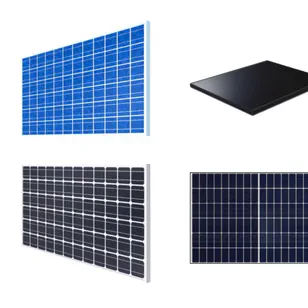Solar energy has become an increasingly popular choice for homeowners looking to reduce their carbon footprint and achieve energy independence. However, one of the biggest challenges in solar power systems is dealing with seasonal variations in energy production and consumption. In this article, we’ll explore how to optimize your solar setup for year-round efficiency, tackling the unique challenges posed by different seasons.
Understanding Seasonal Solar Generation
Solar panel efficiency varies significantly throughout the year. For instance, a 5.74 kW solar station in the Kyiv region might generate 30 kWh per day in June, but only 5 kWh in November. This dramatic difference is due to several factors:
- Shorter daylight hours in winter
- Lower sun angle on the horizon
- Increased cloud cover and precipitation
These factors create a significant challenge for homeowners relying on solar power, especially during the autumn and winter months when energy demands often increase due to heating and lighting needs.
Sizing Your Solar System
To meet your home’s energy needs year-round, it’s crucial to consider the weaker generation periods of autumn and winter when sizing your solar system. A larger system, such as a 10 kW array, could potentially generate around 300 kWh per month even in November, providing a more stable energy supply throughout the year.
However, oversizing your system comes with its own set of challenges. During summer months, you may produce more energy than you can use or store, leading to wasted potential. Learn more about handling excess solar power in off-grid systems .
Strategies for Maximizing Solar Energy Utilization
To make the most of your solar energy system year-round, consider implementing these strategies:
- Invest in a large battery storage system to capture excess energy for use during low-production periods.
- Shift energy-intensive activities to daylight hours, especially during summer months.
- Use electric appliances during peak solar production times instead of gas-powered alternatives.
- Consider charging an electric vehicle with excess solar energy to maximize utilization.
- Use air conditioning units for supplemental heating on sunny winter days to reduce reliance on gas heating systems.
- Schedule tasks like watering, using power tools, or running a compressor during daylight hours.
Proper placement of solar inverters and UPS systems is crucial for efficient performance and longevity of your solar setup.
Seasonal Adjustments
To optimize your solar panel efficiency throughout the year, consider adjusting your panel tilt seasonally. Learn about solar panel tilt for seasonal efficiency to maximize energy production during winter months when generation is typically lower.
The Importance of Energy Storage
A robust battery storage system is essential for managing the seasonal variations in solar energy production. Understanding different types of batteries for solar energy systems can help you choose the best option for your needs.
Conclusion
Living with solar power requires adapting to the rhythms of nature. While summer months may provide an abundance of energy, winter periods require more careful management and conservation. By implementing the strategies outlined in this article and investing in an appropriately sized system with adequate storage, you can create a sustainable and efficient solar-powered home that works for you year-round.
Remember, the key to successful solar living is flexibility and mindfulness in your energy consumption habits. With the right approach, you can harness the power of the sun to meet your energy needs, regardless of the season.




